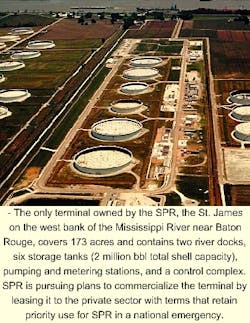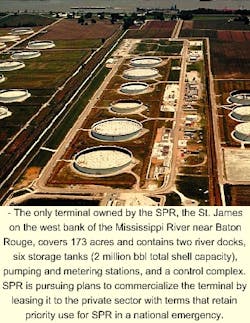The US Department of Energy has completed a 7-year, $328-million refurbishment to extend by 25 years the life of the Strategic Petroleum Reserve.
In 1993, DOE began to upgrade the four SPR sites, two in Louisiana and two in Texas. It says the modernization was completed ahead of schedule and nearly $42 million less than originally estimated.
According to Energy Sec. Bill Richardson, "We have upgraded pumps, streamlined oil handling equipment, and automated many of the control systems. The SPR is now ready to continue as this country's first line of defense against oil disruptions for at least the next quarter century."
More with less
The SPR was established in 1975 following the US' first major oil crisis. Built as a complex of deep oil-storage caverns along the US Gulf Coast, it had an initial design life of 20 years.
Its major sites are Bryan Mound near Freeport, Tex., Big Hill near Winnie, Tex., West Hackberry in Cameron Parish, La., and Bayou Choctaw in Iberville Parish, La. It contains nearly 570 million bbl of oil with capacity for 700 million bbl.
SPR also operates the St. James terminal on the Mississippi River, 45 miles southeast of Baton Rouge, La., which serves Bayou Choctaw and other facilities at Weeks Island, La.
DOE says upgrading the four storage sites will lower SPR operating costs $12-15 million/year, primarily because less equipment and fewer people will be needed to maintain and operate the site.
"Engineers were able to reduce the number of pumps needed to move crude oil by almost 40%, eliminating 60 large, high-horsepower pumping units," says DOE.
"More than 900 of the reserve's 1,800 valves were also eliminated. Many other components have been standardized and automated, making maintenance and inventory control more efficient and lower-cost."
The project involved six construction firms and 20 equipment suppliers. The SPR office in New Orleans and the SPR operating contractor, DynMcDermott Petroleum Operations, oversaw the effort. Walk-Haydel & Associates, New Orleans, performed engineering design work.



